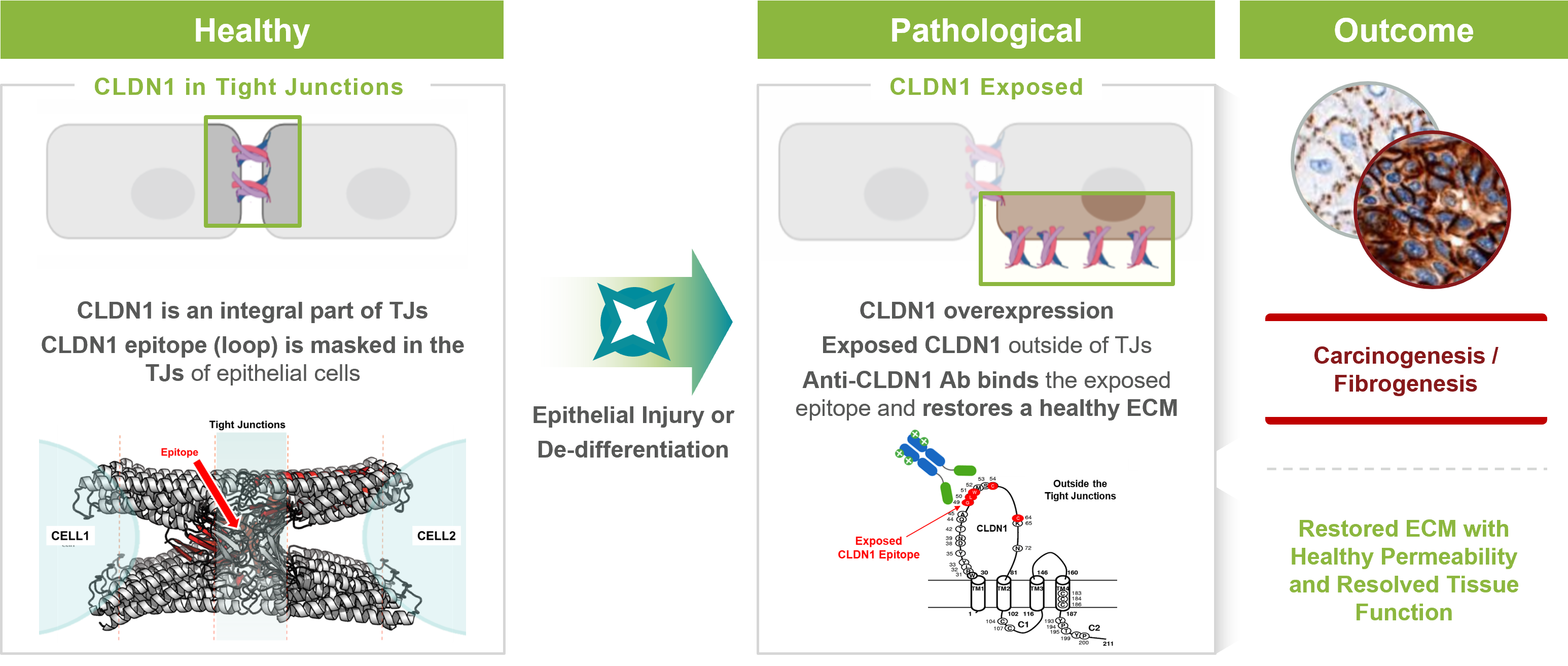RECENT SCIENTIFIC ADVANCES AND DISCOVERIES OF
NEW MECHANISMS OF ACTION ENABLE NOVEL THERAPIES
TO TREAT THE PATHOLOGIC EXTRACELLULAR MATRIX
TARGETING CLDN1 TO TREAT CANCER AND FIBROSIS
- CLDN1 is overexpressed and exposed outside the tight junction during pathogenesis
- Exposed CLDN1 drives remodeling and stiffening of the extracellular matrix (ECM) and induces carcinogenic and fibrogenic signaling
- Alentis’ highly specific and potent antibodies selectively target exposed CLDN1 and have the potential to remodel the tumor microenvironment to allow T-cell infiltration and open up the stiff ECM in tumors and fibrotic organs, helping to resolve and reverse disease
Alentis is a clinical-stage company building on the discovery that CLDN1 is a previously unexplored target with a unique mechanism of action in the pathology of immune evasive tumors and fibrosis in chronic diseases.
Claudin-1 (CLDN1) is a member of the tight junction protein family. During disease pathogenesis, CLDN1 expression is upregulated and exposed outside of the tight junction. Exposed CLDN1 drives remodeling and stiffening of the extracellular matrix (ECM) as well as carcinogenic and fibrogenic signaling in different organs.
Alentis’ pioneering approach harnesses the high specificity and potency of its anti-CLDN1 monoclonal antibodies to target exposed non-junctional CLDN1, revert pathogenesis associated with ECM remodeling and fibrosis, and sensitize solid tumors to immuno-oncologic and chemotherapeutic medication.

